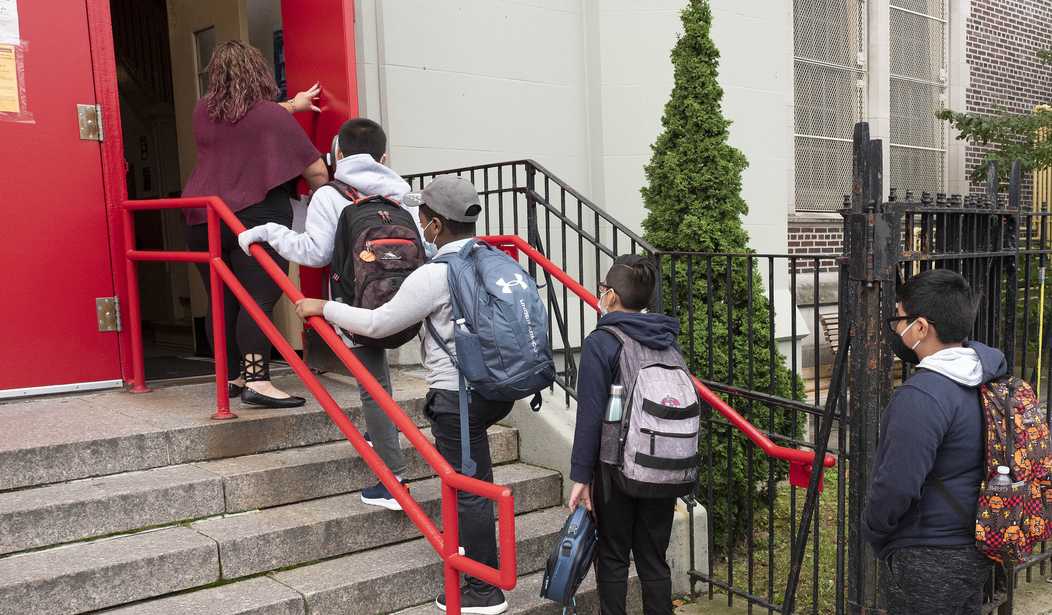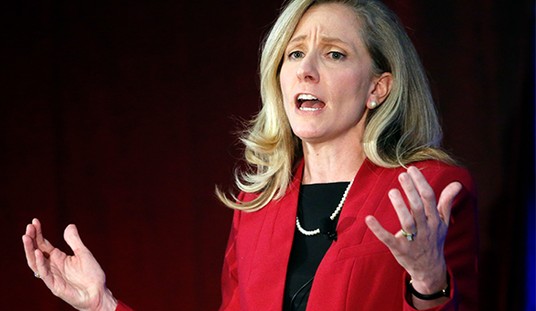Sanity at last. Sanity six months or a year ago would have been better.
The scientific reality plus the logic of their own guidance left them little choice but to recommend reopening. The federal public-health bureaucracy is desperate to get vaccination rates up, knowing that two doses of the vaccine prevents serious illness even after infection by the Delta variant. If vaccinated adults are protected against the scary new strain then there’s no reason why teachers can’t be back in classrooms this fall. As for kids, a new study out of the UK today confirms what’s been clear all along, that they’re at extremely low risk of a bad outcome from COVID:
Some 99.995% of the 469,982 children in England who were infected during the year examined by researchers survived, one study found.
In fact, there were fewer deaths among children due to the virus than initially suspected. Among the 61 child deaths linked to a positive Covid-19 test in England, 25 were actually caused by the illness, the study found.
Could the emergence of Delta change that? Maybe — but kids 12 and up are already eligible to get vaccinated and younger kids are in trials right now. Soon all but the very youngest will have access to the shots. In which case, what’s the logic for closing schools? If adults can protect themselves from Delta and kids increasingly can protect themselves from Delta then there’s no reason to further damage children’s social and intellectual development by relegating them to remote learning. Open the classrooms.
Another way to read today’s announcement is the CDC dangling yet another incentive for people to get vaccinated. They’re worried about parents balking on immunizing their kids because of the remote but real chance of heart inflammation afterward. Telling them that their little ones can go unmasked if they’ve had their shots, which the new guidance does, is an inducement. And the more kids who are vaccinated, the fewer vectors of transmission there’ll be within the population to spread Delta.
The key point in today’s recommendations is that schools should reopen and stay open even if cases in the surrounding community begin to rise again. That’s a major break with the absurdity of the past year, which in some cases led to kids being sent home for days if just two positive COVID tests were recorded among the student body. No more, says the CDC. If there’s a surge in infections in the neighborhood, the solution isn’t to close down but to take extra mitigation measures in class. Tough it out and keep the school doors open.
The Centers for Disease Control and Prevention said Friday that teachers and students who are vaccinated against Covid-19 don’t need to wear masks in schools. Unvaccinated adults and children under 12, for whom vaccines haven’t yet been authorized in the U.S., should wear masks and students of all ages should continue to learn three feet apart, the CDC said.
Where that isn’t possible, the CDC said, classes should be held anyway in conjunction with other precautions like ventilation and cleaning. Even where Covid-19 cases are rising as the highly contagious Delta variant spreads, the CDC said that all students and teachers should continue to meet in person and that those who are unvaccinated should be tested weekly…
“You can start to talk about when and how you might want to remove schools’ prevention strategies such as physical distancing,” [CDC task force leader Erin Sauber-Schatz] said. Masks, testing, hand-washing, and staying home when sick, are among measures that can protect students and staff at schools in places where Covid-19 is spreading, the CDC said. Dr. Sauber-Schatz said schools that can’t determine the vaccination status of staff and students may decide to apply mask rules and other mitigation measures for everyone.
The same logic applies to spacing students out in class. Last year the CDC advised keeping kids six feet apart, a recommendation that not only wasn’t based on hard science but which made no sense given the ability of aerosolized virus to travel far beyond six feet. The agency later revised the spacing recommendation to three feet but some schools still used that as a justification to keep some kids home if the entire class couldn’t fit in a room with the requisite amount of distance between everyone. Today’s guidance tells schools to keep aiming for three feet but, again, not to shut down if they can’t manage it: “If maintaining such spacing would prevent schools from fully reopening, they could rely on a combination of other strategies like indoor masking, testing and enhanced ventilation.”
Why has the CDC suddenly become such stay-open-at-all-costs hardasses? Well, it seems they’ve concluded that keeping children out of class for months when they’re at near-zero risk of serious illness from COVID is worse than bringing them back to school and chancing the occasional infection.
If only we’d known.
The guidance, which The Times has seen in draft form, is a sharp departure from the C.D.C.’s past recommendations for schools, bluntly acknowledging that many students have suffered during long months of virtual learning and that a uniform approach is not useful when virus caseloads and vaccination rates vary so greatly from city to city and state to state…
“This a big moment,” said Dr. Richard Besser, a former acting director of the C.D.C. “It’s also a recognition that there are real costs to keeping children at home, to keeping them out of school, that school is so important in terms of children’s socialization and development and it provides other supports as well” — including to working parents…
“We know that in-person learning is really important for school, for children, for their educational, social and emotional well-being, and so we really want to get kids back in the classroom,” Erin Sauber-Schatz, a captain in the Public Health Service Commissioned Corps who helped lead the C.D.C. task force that wrote the guidance, said in an interview.
One last important point in the new guidance is that school districts should use local data in deciding whether to shut down due to an outbreak somewhere. One would think that’d be common sense, but some blue states and counties with itchy lockdown fingers are destined to want to send kids home for a month or whatever as a precaution if there’s a COVID flare-up in the red state next door. The CDC’s telling them not to do that, knowing that we’re entering a two-track phase of the pandemic now in which highly vaccinated states should be safe even when less vaccinated states are seeing outbreaks. Today’s guidance is an advisory to the Gavin Newsoms and Andrew Cuomos to tend to their own gardens and err on the side of keeping schools open even if the picture outside their states suddenly darkens.
There are two tricky questions going forward. What should schools do about masking kids? The CDC says vaccinated kids don’t need ’em, but if you force only the unvaccinated kids to wear them then you risk awkwardness or stigmatization in class. Some schools may resort to ordering both the vaxxed and unvaxxed kids to mask up simply to level the playing field — although, given that unvaccinated children are at little risk, the policy should really be to have all of them unmask.
The second tricky problem is how much pressure to put on parents — and teachers — to get vaccinated before the fall semester. The CDC isn’t taking a position on that in today’s guidance, the AP reports, which I understand with respect to kids. Asking a parent to expose their child to a small risk of a heart complication to be immunized from a disease that hardly threatens him is a lot to ask. Although, as three doctors recently argued, the data supports vaccinating kids for their own protection notwithstanding the possibility of cardiac inflammation. By their math, if all 73 million kids 17 and under were vaccinated, we should expect 7,700 hospitalizations connected to the vaccine, most of them brief. If instead all 73 million caught COVID, we’d expect 14,600 hospitalizations, some of them long. And some would be cardiac-related: “Notably, heart complications of the syndrome are both more common overall and far more long-lasting than what’s seen with vaccine-related myocarditis among teenagers.”
Like I say, though, I understand why the CDC doesn’t want to insert itself into that debate. I do not understand why the agency isn’t advising school districts to mandate shots for teachers as a condition of employment, apart from the usual reason that all must eventually bow before the teachers unions and the unions want kids to be the ones to be forced to get vaxxed instead of their own members. You know Randi Weingarten — always lookin’ out for the children’s best interests.
Speaking of which, has the CDC run the new guidance past the boss yet? Without her approval, they might need to start over.








Join the conversation as a VIP Member